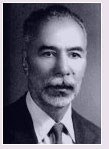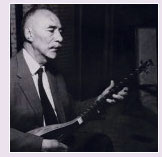 |

 The
music of Ostad Elahi, who was a master musician as well as a contemporary
jurist and philosopher, is rooted in an ancient tradition that has
been orally passed from one generation to the next for centuries.
Within this tradition, it was customary at spiritual gatherings
to recite sacred texts accompanied by instruments such as the tanbour
(an ancient Kurdish lute), the ney (reed flute), and the daf (large
frame drum). Those who played the tanbour at these gatherings, however,
often did so at a rudimentary level and solely as an accompaniment
to their poetry. The
music of Ostad Elahi, who was a master musician as well as a contemporary
jurist and philosopher, is rooted in an ancient tradition that has
been orally passed from one generation to the next for centuries.
Within this tradition, it was customary at spiritual gatherings
to recite sacred texts accompanied by instruments such as the tanbour
(an ancient Kurdish lute), the ney (reed flute), and the daf (large
frame drum). Those who played the tanbour at these gatherings, however,
often did so at a rudimentary level and solely as an accompaniment
to their poetry.
By transforming its simple and primitive musical repertoire into
a highly sophisticated and intricate art form, Ostad Elahi essentially
revolutionized the art of tanbour. Although grounded in an ancient
tradition, Ostad Elahi’s music is in many ways a completely
novel phenomenon unique to him. His original compositions and numerous
improvisations are unlike anything that had previously existed in
terms of their depth, complexity, variety, color, timbre, and the
range of emotions they evoke within the listener.
 He also made significant modifications to the instrument itself,
adding a third string that created a whole new array of color and
sound. He augmented this new capability with his unique ornamentation
and playing style, which included using all five fingers of both
hands. His musical techniques create several layers and levels of
melodies and tempi, and are a carefully choreographed dance in themselves.
Add to this the impact of his personality, his powerful presence,
and his pure intentionality, and you create an experience that simultaneously
engages all of the senses.
He also made significant modifications to the instrument itself,
adding a third string that created a whole new array of color and
sound. He augmented this new capability with his unique ornamentation
and playing style, which included using all five fingers of both
hands. His musical techniques create several layers and levels of
melodies and tempi, and are a carefully choreographed dance in themselves.
Add to this the impact of his personality, his powerful presence,
and his pure intentionality, and you create an experience that simultaneously
engages all of the senses.
Considering music above all as a means of reflection and contemplation,
Ostad Elahi never performed in public, nor did he make any professional
recordings of his music. He often stated: “If played with
a divine intention, music is the link that will connect us to the
Source.” He thus played the tanbour only in small gatherings
of family and close friends, where a mutual intentionality was inherent.
One of the unique characteristics of Ostad Elahi’s music is
that it does not require any external points of reference to listen
to or benefit from. Free of any temporal or cultural bounds, he
incorporates certain dissonances into his music that serve as triggers
to dislodge our senses from the habitual and ordinary and facilitate
the opportunity for change.
For more information on the life and work of Ostad Elahi, visit
www.ostadelahi.com.
A 24-hour, commercial-free radio station devoted exclusively to
his music can also be found at www.ostadradio.com.

|
 |
